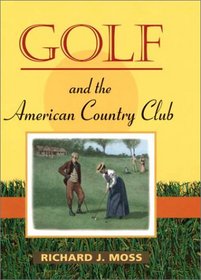Search -
Golf and the American Country Club (Sport and Society)
Golf and the American Country Club - Sport and Society
Author:
In this entertaining cultural history, Richard J. Moss explores the circumstances that led to the firm establishment of the country club as an American social institution and its inextricable connection to the ancient, imported game of golf. The founders of the early country clubs sought to counter the nationalization and standardization of Am... more »
Author:
In this entertaining cultural history, Richard J. Moss explores the circumstances that led to the firm establishment of the country club as an American social institution and its inextricable connection to the ancient, imported game of golf. The founders of the early country clubs sought to counter the nationalization and standardization of Am... more »
ISBN-13: 9780252026423
ISBN-10: 025202642X
Publication Date: 4/12/2001
Pages: 232
Rating: 1
ISBN-10: 025202642X
Publication Date: 4/12/2001
Pages: 232
Rating: 1
3 stars, based on 1 rating
Publisher: University of Illinois Press
Book Type: Hardcover
Other Versions: Paperback
Members Wishing: 1
Reviews: Amazon | Write a Review
Book Type: Hardcover
Other Versions: Paperback
Members Wishing: 1
Reviews: Amazon | Write a Review
Genres:
- Sports & Outdoors >> Golf >> General
- Sports & Outdoors >> Miscellaneous >> History of Sports
- Sports & Outdoors >> General
- Nonfiction >> Social Sciences >> Sociology >> General




